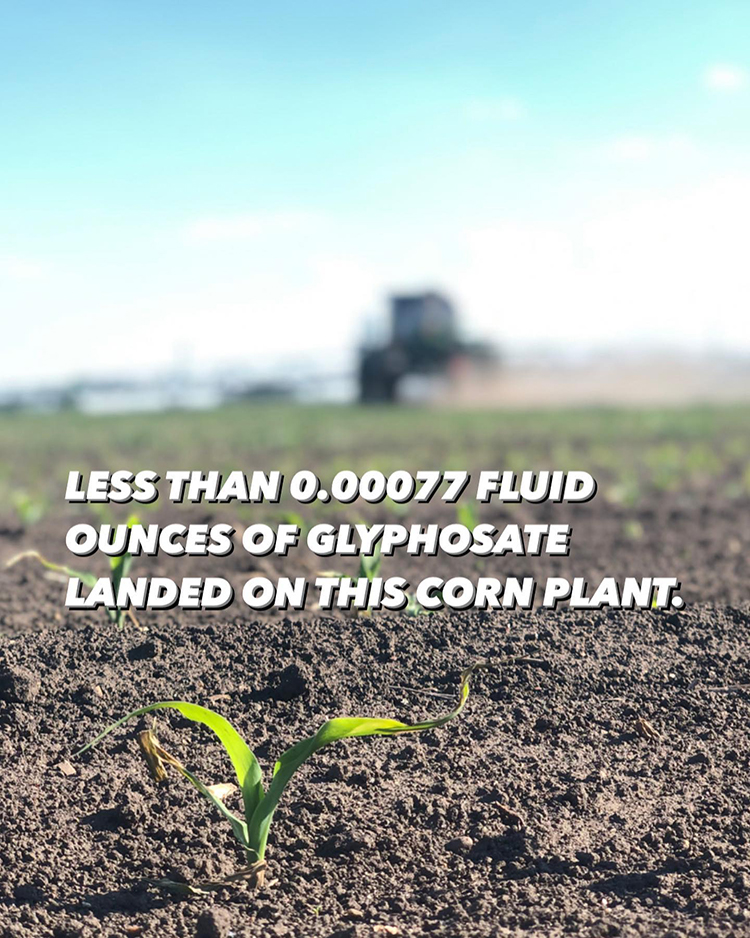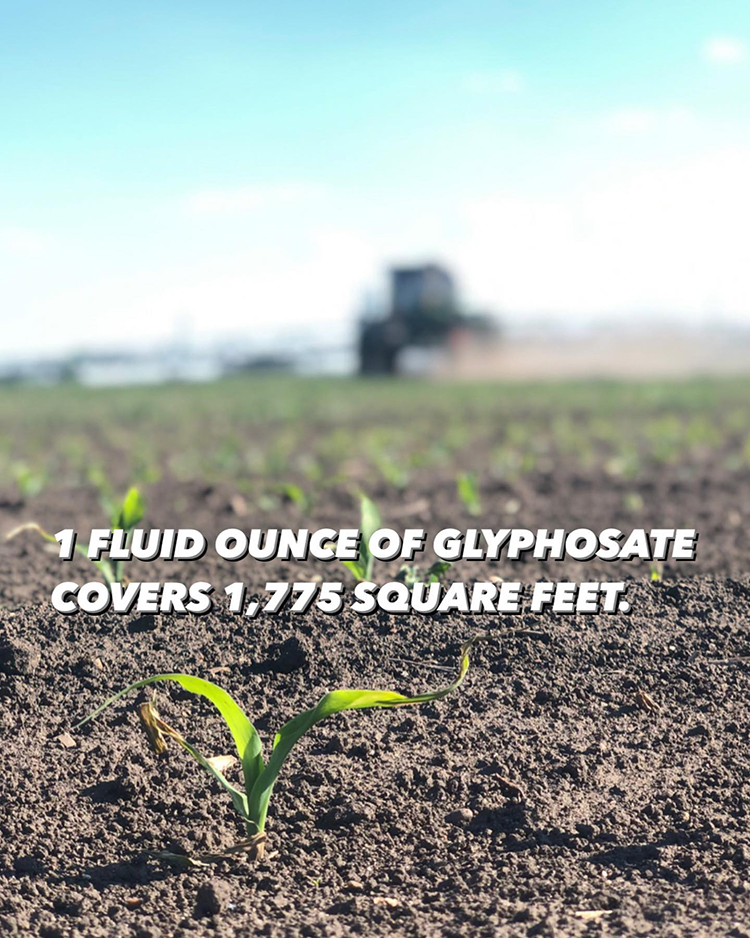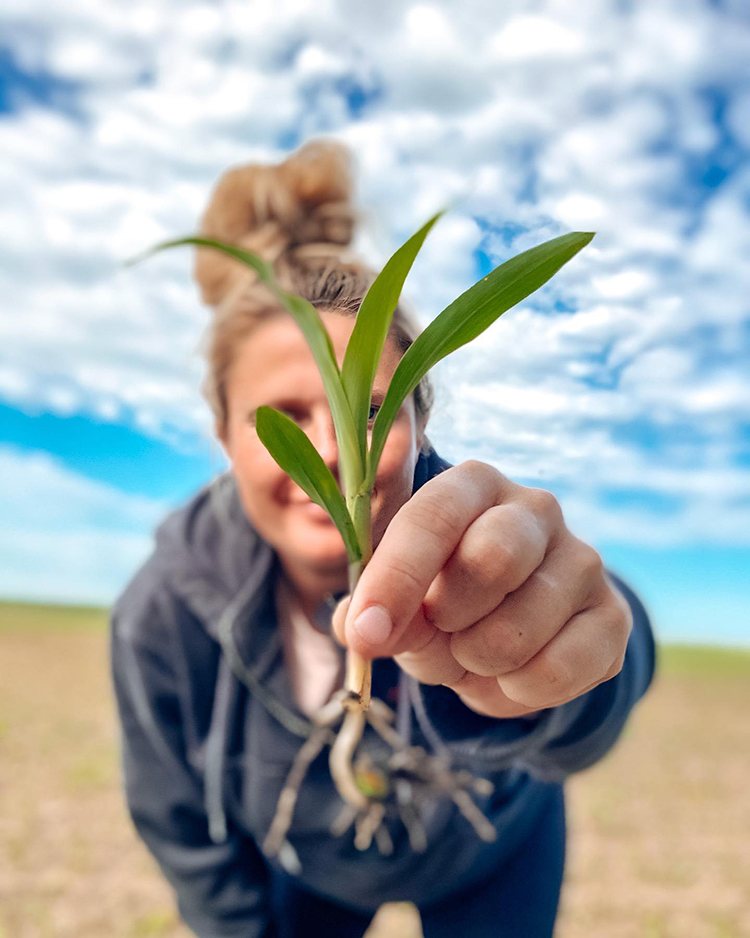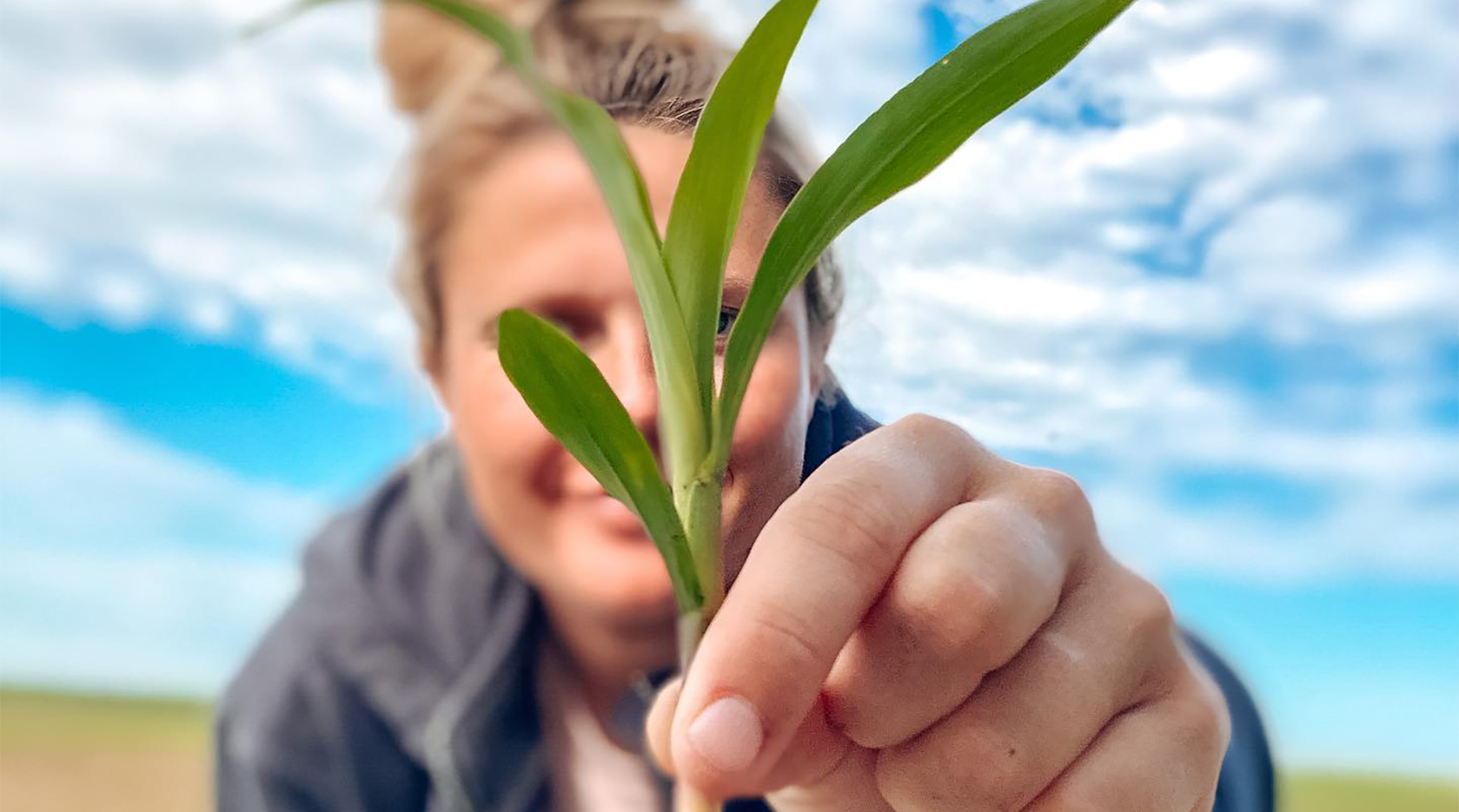By Chelsey Erdmann
Glyphosate went on corn for the first time when we started spraying these 3 leaf corn plants.
It was applied with water and a few other chemicals to kill the weeds and provide residual.
So, how much glyphosate touches each corn plant?

Assuming the water/chemical mixture only touches the corn plant and no dirt or weeds each plant would receive 0.00077 ounces of glyphosate based on our planting and spray rates.
Knowing the water/chemical mixture touches more than the corn plants, we know that it’s most likely each plant receives less.

To visualize, 1 ounce of glyphosate would cover 1,775 square feet. Think about the size of your house and distributing 1 fluid ounce of liquid throughout.
According to multiple studies the typically agreed upon half-life for glyphosate in soil is 47 days.
When researching toxicity, there were many studies proving safety, as well as many others sharing concern. In my research, I had a few questions answered, but many more that don’t have data or conclusions yet.
With the mix of information available, why do we choose to utilize glyphosate?
Our current options for weed control are chemical, cultivation, or manually pulling weeds. Our goal is to nurture and support the corn plant so that it can put its energy toward kernel production.
We used to cultivate crops, but have moved away from it for many reasons. Finding labor is difficult in this area already; to find people willing to hoe thousands of acres would be a monumental task. Then finding the capital to pay those people and still make money on the crop would be an incredible feat.
The corn we grow here is destined for an ethanol plant or for animal feed. Full disclosure: the sweet corn patch we eat as a family is sprayed with glyphosate as well.
There is technology available that uses sensors to only spray the weeds. It’s something I’m crunching the numbers on.
Agriculture is innovating. Our options are shifting.
For right now, for our operation, our best option is utilizing glyphosate. We are doing the best we can with what we have.
 Chelsey is the District 5 representative on the NDFB Promotion and Education Committee. This post first appeared on her Instagram and Facebook pages. Follow Chelsey at "Oh That's Chelsey"
Chelsey is the District 5 representative on the NDFB Promotion and Education Committee. This post first appeared on her Instagram and Facebook pages. Follow Chelsey at "Oh That's Chelsey"
